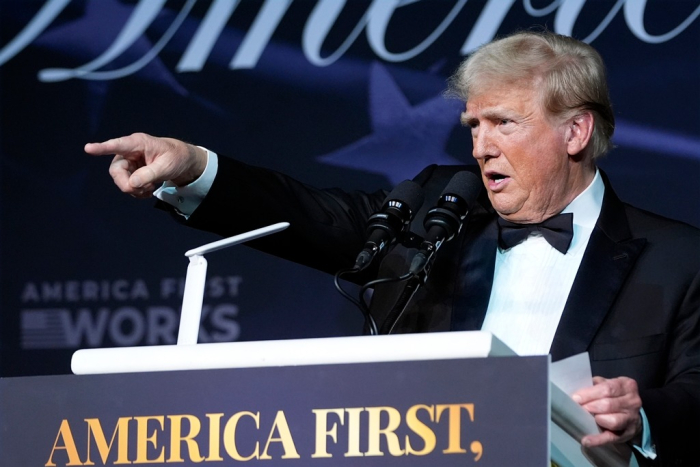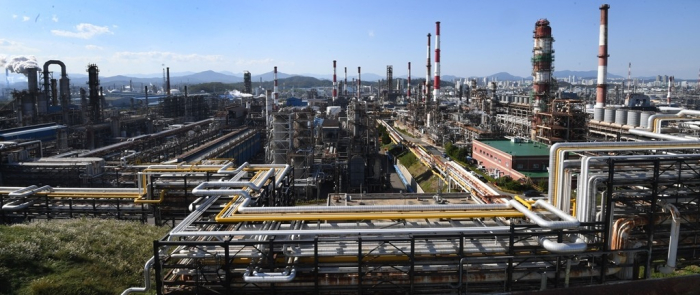
South Korea, the world’s fourth-largest oil importer, is considering increasing US oil imports to ease potential pressure from President-elect Donald Trump’s trade protectionism as he seeks to export more fuels.
South Korea surveyed the current status of oil purchases and supplier diversification of four refiners in the country – SK Innovation Co., GS Caltex Corp., S-Oil Corp. and HD Hyundai Oilbank Co., according to industry and government sources on Wednesday.
Those refiners are also checking measures to adjust the blending ratio of US and Middle Eastern crude oils and to modify facilities.
“The move is a pre-emptive step to cope with various trade issues expected to emerge after the Trump administration launches,” said an official at the South Korean Ministry of Trade, Industry and Energy.
“The increase in US oil imports was considered one of the measures that Korea could propose (to ease any pressure from Washington’s trade protectionism.”
US oil is expected to account for more than 20% of South Korea’s total crude imports if the country raises purchases, up from the current 16.7%, local refining industry sources said.
The International Monetary Fund (IMF) earlier in the day lowered its forecast for South Korea’s 2025 economic growth to 2% from the previous 2.2%as trade headwinds grow. Trump’s tariff policies dampened economists’ confidence in South Korea’s export momentum, although it remains premature to predict the impact of Trum’s second administration on Asia’s fourth-largest economy.
ALREADY INCREASING
South Korea already raised US oil imports during Trump’s first term in 2016-2020. He pressed the Asian country to intake more US crude oil during the period after the country lifted the 40-year ban on crude oil exports.
US oil’s share in South Korean crude imports jumped to 10.2% in 2020 from just 0.1% in 2016. The share has been rising further to 12.1% in 2021, 13.6% in 2022, 14.2% in 2023 and 16.7% in the first 10 months of this year.
Trump, who appointed fossil fuel executives such as Liberty Energy CEO Chris Wright as key government posts including Energy Secretary for the goal of US energy dominance, is expected to step up pressure on South Korea to import US crude more, industry sources said.
The US is already the world’s largest oil producer with a daily output of 13.3 million barrels last year, beating Russia with some 10 million barrels and Saudi Arabia with less than 9 million barrels.
South Korea has the world’s fifth-largest refining capacity of 3.4 million barrels a day.

SUPPLIER DIVERSIFICATION
South Korean refiners have heavily relied on oil from the Middle East for over 40 years. Oil from the region still made up 70.8% in January-October this year, although the share fell from 85% in 2014.
Middle Eastern oil is more expensive than US crude. It cost $76.7 per barrel including transportation expenses and tariffs to purchase the Middle Eastern oil based on the Dubai Crude Oil price of $72.53 on Tuesday. On the other hand, it cost $73.53 to buy US crude, given the West Texas Intermediate price of $69.53.
South Korea, which has been encouraging refiners to procure crude from other nations to reduce the dependence, plans to offer more incentives for their supplier diversification.
The government plans to provide logistics costs, which make up about 5% of oil import expenses.
It also extended the 200 billion won ($143.6 million) financial support for supplier diversification, which had been to expire in 2024, for three years.
NOT THAT EASY
Local refiners, however, said it may not be easy to raise US oil imports further in the short term.
The supply of US oil is less stable than that of Middle Eastern crude, industry sources said. The Persian Gulf has more infrastructure such as ports because of the concentration of major oil producers such as Saudi Arabia and the United Arab Emirates.
The US does not have enough facilities to manage large oil shipments, sources in Seoul said. Only Louisiana has a port that can accommodate only one very large crude carrier (VLCC) with a capacity of 2 million barrels.
It typically takes about 40 days to ship oil from the U.S. to South Korea, almost twice as long as the 22 days it takes from the Middle East because those ships have to make a detour to the South American continent instead of going through the Panama Canal because of their heavy weight.
South Korean refiners need to adjust their facilities, which have been optimized to refine Middle Eastern crude, to use more US oil, which is lighter than crude from the Arabian Gulf.
The South Korean government needs to provide local refiners with financial support on logistics and facility investments to procure more US oil, industry sources said.
“The government must discuss measures to support the industry while considering increasing US oil imports,” said a refiner official in Seoul. “Otherwise, the industry may seek just one-time cooperation, taking only spot cargoes.”
By Hyeon-woo Oh and Hyung-Kyu Kim
ohw@hankyung.com
Jongwoo Cheon edited this article.













